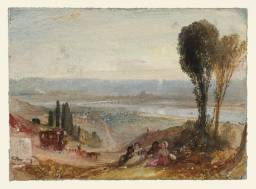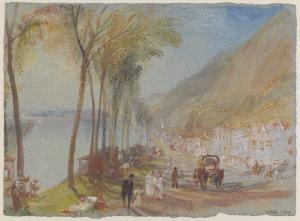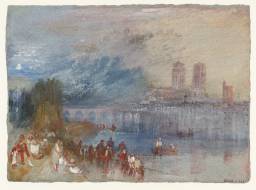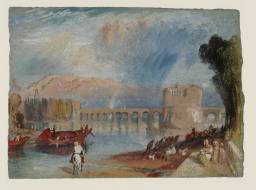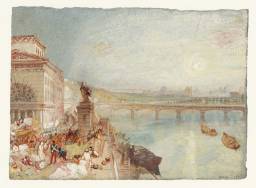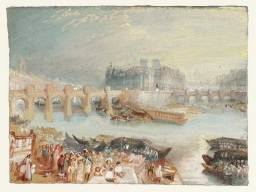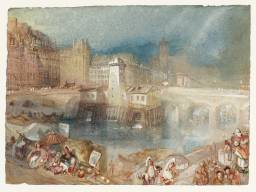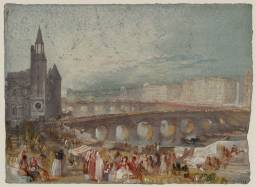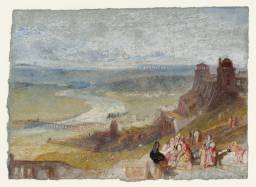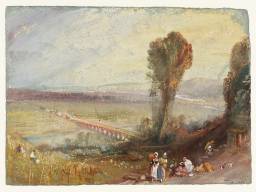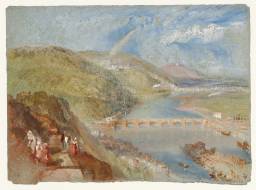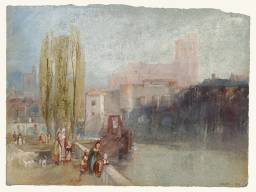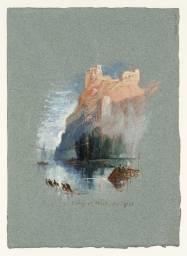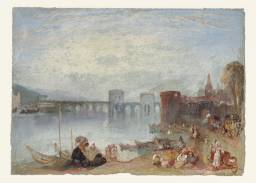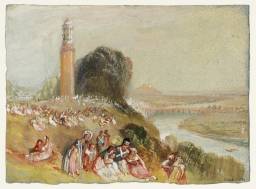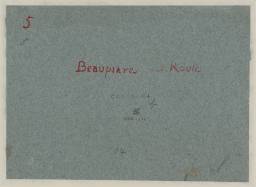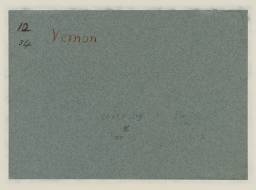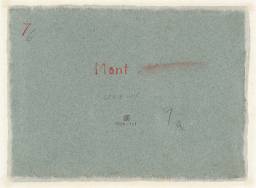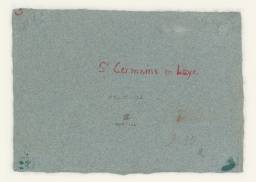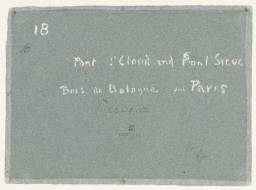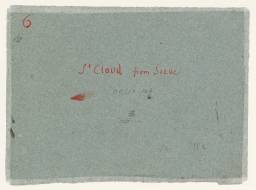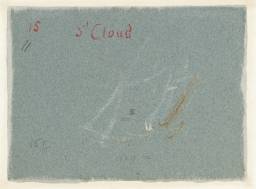Turner Bequest CCLIX 112–127, 129, 132
References
This subsection of Seine watercolours comprises eighteen works of views along the River Seine in northern France. Broadly, the locations covered stretch from the town of Pont-de-l’Arche, eastwards through the city of Paris, and onto the towns of Melun and Troyes. Turner produced these watercolours to be made into engravings to illustrate the volume Turner’s Annual Tour -Wanderings by the Seine (subtitled ‘from Rouen to the Source’), published in 1835, and made a further two watercolours for this series. These are Paris: Boulevard des Italiens, c.1833 (private collection)1 and Confluence of the Seine and Marne at Charenton, c.1833 (private collection).2
In topographical sequence, the locations portrayed are Pont-de-l’Arche; Château Gaillard; Vernon; between Mantes and Vernon (Bonnières); Mantes; Meulan; Saint-Germain-en-Laye; Saint-Denis; Saint-Cloud; Sèvres; Paris; Charenton; Melun and Troyes.3 The scenes vary from quiet views of towns such as Mantes and Saint-Denis, to the imposing ruined castle of Château Gaillard, to the pleasure grounds at Saint-Cloud and Saint-Germain-en-Laye, to bustling city scenes of central Paris. Many of the works in both series of the Seine watercolours, dating from 1832 and 1833, feature bridges, but particularly in these views of Paris (Tate D24682–D24685; Turner Bequest CCLIX 117–120) bridges are a central motif, spanning dramatically over entire images.
The date of these watercolours has been determined to c.1833. 4 In general, Turner based the watercolours on previous sketches from his Paris and Environs sketchbook (Tate; Turner Bequest CCLVII) dating from a tour he made in 1832. However he also uses sketches from his Seine and Paris sketchbook (Tate; Turner Bequest CCLIV) of the same year, some from his Dieppe, Rouen and Paris sketchbook (Tate; Turner Bequest CCLVIII) from 1821, several from his Tancarville and Lillebonne sketchbook (Tate; Turner Bequest CCLIII), likely to date from a tour in 1829, and also some others.Turner visited northern France, the Seine and Paris on many occasions. He first visited France in 1802, with further tours in 1821 (Paris, Seine), 1824 (northern France, Dieppe), 1826 (northern France; Normandy, Brittany, Loire), 1832 (Paris, Seine), 1837 (Paris, Versailles) and 1845 (northern French coast),5 as discussed in this catalogue.
The lack of detail in these watercolours (as discussed in the overall section Introduction) is particularly apparent in Troyes, c.1833 (D24691; CCLIX 126) in which the major scenic feature, the town’s cathedral, is rendered only in a simple wash of lilac-coloured gouache and with minimal definition. The resulting engraving (Tate impressions T04726, T05626 and T06264), however, conveys much more intricacy. Roughness of execution is also visible in The Bridge of Meulan, c.1833 (D24681, Turner Bequest CCLIX 116).
Turner’s expressive use of colour, to convey mood, is especially noticeable in works such as Troyes,c.1833 (Tate D24691, Turner Bequest CCLIX 126) or Bridges of St-Cloud and Sèvres, c.1833 (Tate D24688, Turner Bequest CCLIX 123). In the latter, soft, warm tones of yellow suffuse the entire view. In works such as Melun, c1833 (Tate D24690, Turner Bequest CCLIX 125), colour is used to shape whole scenes.
How to cite
Caroline South, ‘Watercolours for ‘Wanderings by the Seine, from Rouen to the Source’ (‘Turner’s Annual Tour’) c.1833’, subset, November 2017, in David Blayney Brown (ed.), J.M.W. Turner: Sketchbooks, Drawings and Watercolours, Tate Research Publication, November 2019, https://www

